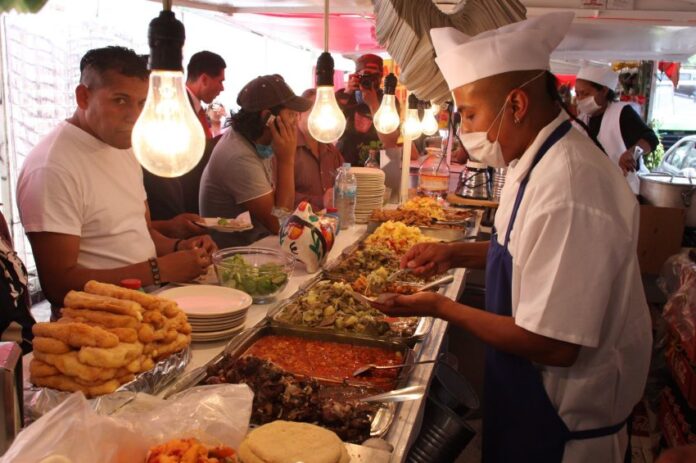A proper history of Mexican street food would require more than an article, or even a book. Rather, it would need a massive encyclopedia set, covering the evolution of everything from aguas frescas, buñuelos, camotes, cemitas, ceviches, chicharrones, corundas, duros, enchiladas, fruta con chile, huaraches … You get the idea, and I haven’t even gotten to tlacoyos and tlayudas, much less tortas and the innumerable variations of all of the above.
This will be a less exhaustive version, which is to say, a condensed look at the origin of the iconic sextet of Mexican street food — tacos, tamales, elotes, sopes, quesadillas and churros — plus a historical survey of the baskets, carts, stalls, trucks, markets and more from which these specialties have traditionally been sold.
After all, part of the joy of street food is convenience, so a five-minute read seems more appropriate than the much longer alternative.
The taco
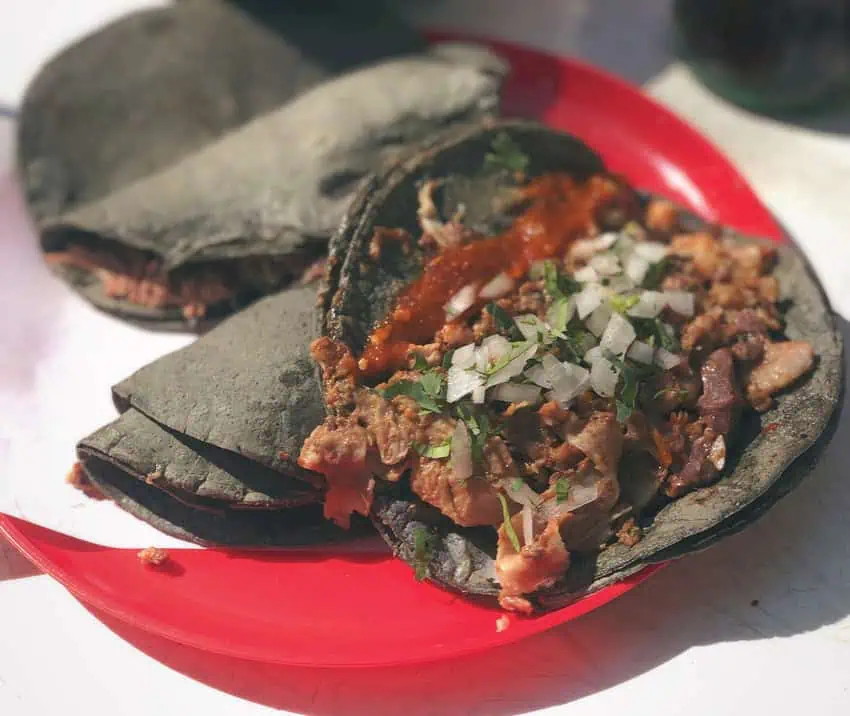
Despite being young, relatively speaking, the taco is the king of Mexico’s street food scene. Its name comes from the small charges used to excavate ore in Mexico’s silver mines during the 18th century. The mine workers of this era were the creators of tacos sudados — sweated tacos — with tortillas dipped in oil and filled with potatoes before being kept warm in baskets— the origin of tacos de canasta. After the mining industry’s decline following Mexico’s independence from Spain, many miners migrated to Mexico City, bringing their favorite treats along.
The first mention of tacos in print was in Manuel Payno’s novel “Los bandidos de Río Frío,” published in 1891. More than 100 other variations of tacos soon followed.
The tamal

Tamales and atole are the oldest pairing in Mexico, with the former made with corn and other ingredients and wrapped in corn husks, the latter from corn flour and water, spiced with cinnamon, vanilla and other flavors.
Likely the first street food, the Maya have long associated the tamal with fertility and abundance, and the latter cannot be argued, since today there are over 500 varieties.
Elotes and esquites
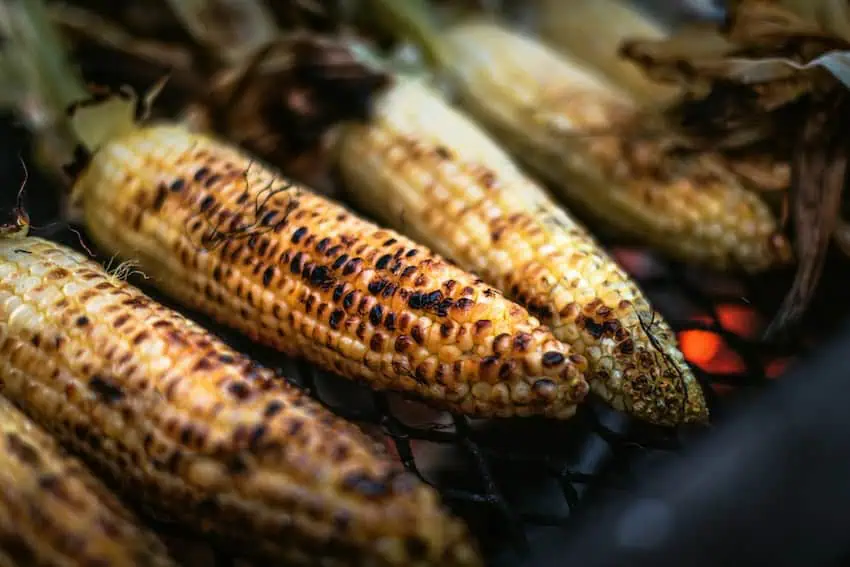
Corn has been grown in Mexico for 9,000 years, and early versions of elote — grilled corn on the cob — as a proto-street food certainly existed in pre-Columbian times, as did esquites, which are loose corn kernels in a cup.
Modern versions originated in Mexico City during the latter half of the 19th century when ingredients like cheese, sour cream and mayo were added to longtime favorites like lime, cilantro and chili powder. The first evidence of mayonnaise as a topping dates to 1899 and comes from a food ad published in the newspaper El Imparcial.
The sope
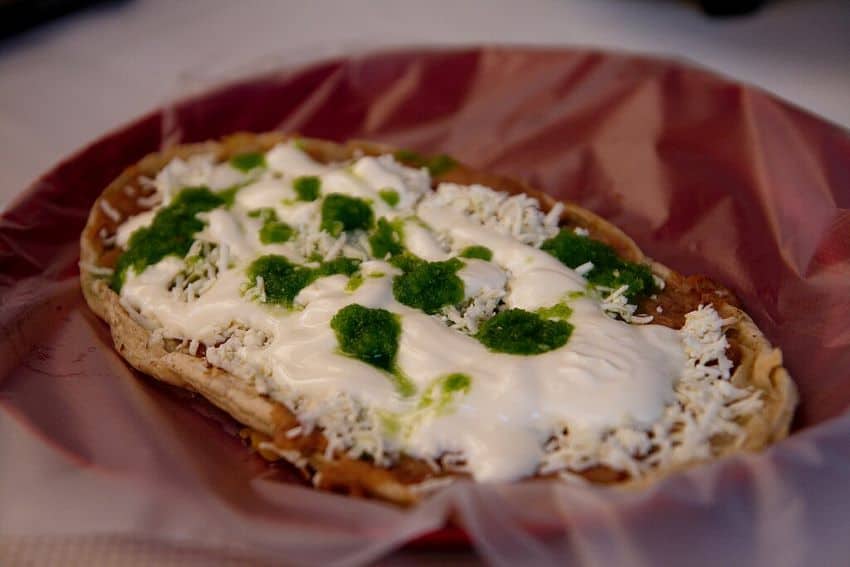
Like the elote, sopes also have an ancient history. However, while the origin is undoubtedly pre-Columbian, there’s not a great deal of evidence to link them to possible creators like the Toltecs or Mexica, other than that the name comes from the Nahuatl word “sopalli.”
In modern times, Mexico City is the capital for this street food classic, which features a thick, fried masa base with pinched or raised edges to keep tasty toppings from falling off. These toppings often include shredded meat, lettuce, onion, cilantro, sour cream and cheese.
The quesadilla

With cheese or not with cheese; that is the question.
The answer is usually no in Mexico City unless you specifically ask for it, although in much of the rest of Mexico, it’s a yes.
The corn tortilla, naturally, predates Spanish colonization and dates back to ancient Mesoamerica. However, the Spanish brought wheat for flour tortillas — a specialty in northern Mexico — and plenty of new ingredients to fold into both varieties, including the pork for chicharrón prensado.
Other favored modern ingredients, like mushrooms, huitlacoche and squash blossoms, though, are native to Mexico.
The churro

Named for the antlers of the churra sheep, a breed native to Castile and León in Spain, churros weren’t invented in Mexico but were brought to perfection here, thanks to later pairings with hot chocolate.
The dessert treat evolved from Chinese deep-fried dough sticks called youtiao, which were first brought to Portugal, then Spain and finally Mexico by the 19th century, where they were and still are famously dusted with cinnamon and sugar. Cajeta, either as a stuffing or dip, is also popular.
The evolution of how street food is sold in Mexico
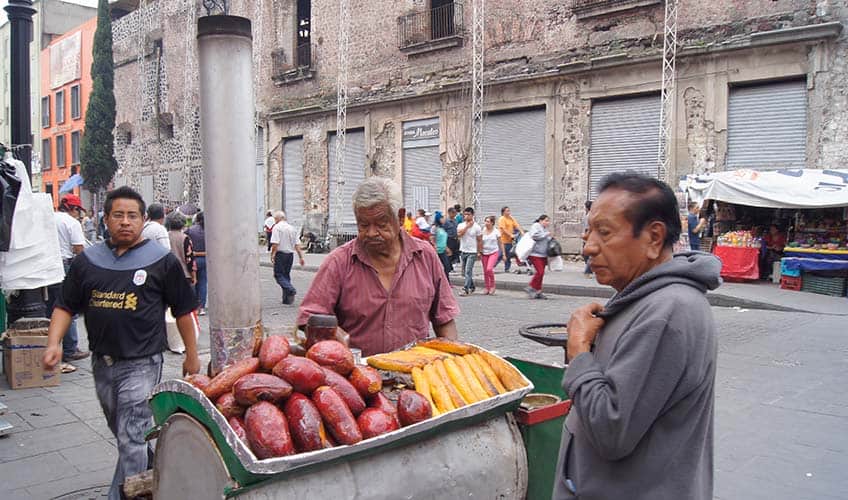
If the origins of Mexico’s favorite street foods all go back centuries, if not millennia, the methods of delivery of these foods are often a mix of old and new. The original street food was sold in tianguis, or traditional marketplaces, the best known of which in pre-colonial times was in Tlatelolco, on the site of the Plaza Tres Culturas in what is now Mexico City.
These days, modern marketplaces have since taken their place, the most notable example being the Mercado de La Merced in Mexico City’s Historic Center. Inaugurated in 1957 on the site of earlier markets, at over 500,000 square meters it instantly became one of the largest gathering places in Latin America.
Between the thousands of vendors here and at neighboring street markets and stalls, hungry chilangos can sample a microcosm of cuisine from around Mexico, from street food favorites like tacos, quesadillas and tostadas to aguas frescas, regional sweets, fresh fruits and vegetables and edible insects from Oaxaca.
For those who don’t live in Mexico’s great cities, though, street food is often a movable feast. Vendors who make their rounds with offerings in baskets still exist, but over time, the arrival of modern bicycles in the early 20th century evolved into the awesome variety of customized two and three-wheeled carts that vendors now peddle across virtually every navigable street in the nation.
The most creative of these was undoubtedly the camote cart, the oven on wheels with a distinctive whistle that became popular in the 1950s and still exists as a vehicle for delivering sweet potato treats to the masses with a variety of toppings, although its use has declined.
The food truck concept was a north-of-the-border innovation, as the modern trend began in Los Angeles in 2008 with a fusion of Mexican and Korean cuisine, courtesy of Chef Roy Choi. However, the model now exists in Mexico too, as does a more primitive version in which vendors drive around in pickup trucks with food packed in coolers in the back. That’s a favorite of seafood vendors in my neck of the woods.
After all, why wait for the customers to come to you? Especially when there are so many other competitors.
Chris Sands is the Cabo San Lucas local expert for the USA Today travel website 10 Best, writer of Fodor’s Los Cabos travel guidebook and a contributor to numerous websites and publications, including Tasting Table, Marriott Bonvoy Traveler, Forbes Travel Guide, Porthole Cruise, Cabo Living and Mexico News Daily. His specialty is travel-related content and lifestyle features focused on food, wine and golf.
